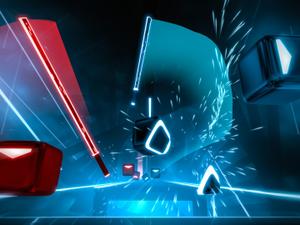
Quem nunca ficou jogando videogame até tarde escondido dos pais que atire o primeiro controle. Essa sensação do proibido para terminar mais aquela fase é algo que o futuro jogo Pixel Ripped 1995 consegue transmitir muito bem.
O game em Realidade Virtual é continuação de Pixel Ripped 1989, lançado em 2018 para os principais dispositivos VR. Ainda estamos a alguns meses do lançamento do novo Pixel Ripped, mas START foi convidado para uma sessão de testes no estúdio onde a mágica em Realidade Virtual acontece, o ARVORE, em São Paulo.
Antes de falar de 1995 precisamos voltar alguns anos, porque Pixel Ripped 1989 é um videogame sobre jogar outro videogame, só que em realidade virtual, ao coloca o jogador no papel de Nicola, uma garotinha viciada nessas diversões eletrônicas que tanto gostamos.
Através do aparelho portátil Gear Kid, uma espécie de Game Gear de mãos dadas a um Game Boy, controlamos a super-heroína Dot em sua jornada contra o nefasto Cyblin Lord (um goblin jocoso e maldoso), que quer extrapolar os domínios dos videogames e invadir o nosso mundo, no caso, todo aspecto de Realidade Virtual do jogo.
A mistura entre gameplay convencional, num run 'n gun de alta qualidade, remetendo diretamente a clássicos como Mega Man e Contra, e a interação com o "mundo real" em Realidade Virtual, fizeram de Pixel Ripped 1989 algo estrutural e mecanicamente bastante único.
Um dos desafios do primeiro game é jogar o portátil virtual sem ser pego pela professora no meio da aula. Já em Pixel Ripped 1995, uma estrutura similar acontece, mas agora temos que jogar um videogame 16 bit, como Super Nintendo ou Mega Drive, escondido da mãe.



